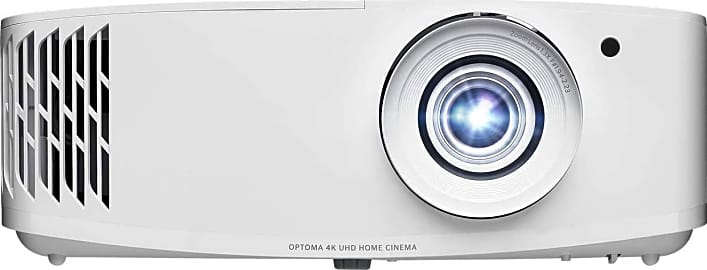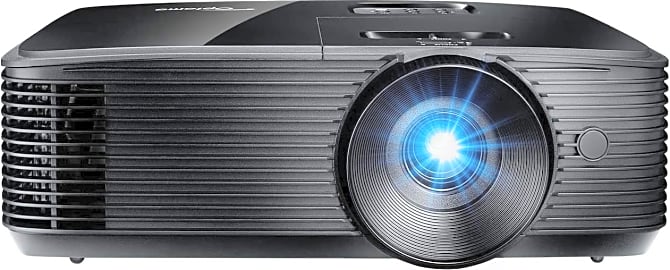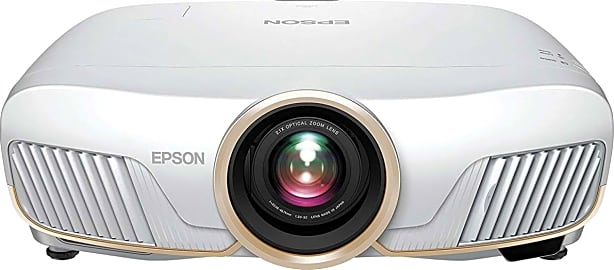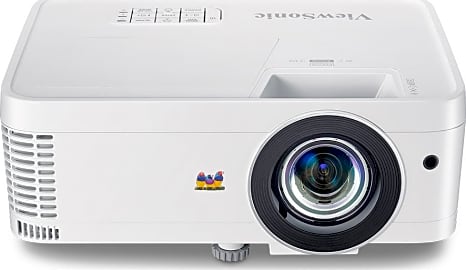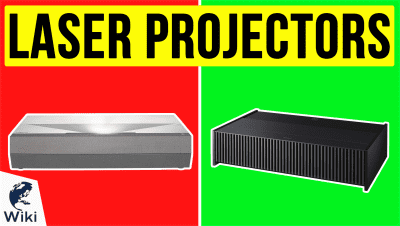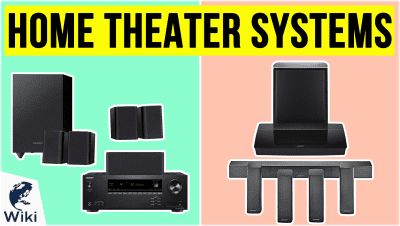The 7 Best Gaming Projectors

This wiki has been updated 36 times since it was first published in March of 2017. If you're ready to start dominating your friends on a big screen, then a top-notch projector can take your gaming to the next level. Not all devices are created equal, though; you want to make sure you get one with the specs to handle high-definition video without lagging. All the options on this list ensure that your next victory will be clearly seen by everyone in the house. When users buy our independently chosen editorial picks, we may earn commissions to help fund the Wiki.
Editor's Notes
December 29, 2020:
Thanks to pixel-shifting technology, models like the Epson Home Cinema 5050UB and Optoma UHD50X are able to provide 4K images without costing a fortune. But most people don't actually game at 4K, so most people will be very happy with the BenQ TH685. This one accepts a 4K signal, downscales it to 1080p, applies the HDR instructions, and sends it on its way, in this case at up to 120 hertz. The Optoma HD146X is even more affordable, and just as reliable, but limited to 60 hertz. If you're okay with a native 1080p resolution and just want premium image quality, the Optoma GT1090HDR is the way to go - it's one of the few reasonably priced laser projectors with a low input lag suitable for gaming.
June 08, 2019:
You'll notice that we don't have many 4K projectors on the list; currently and for the forseeable future, 4K DLP technology has too much input lag to satisfy most gamers. The one we did include, the BenQ TK800M, has under 50 milliseconds of latency, which is good but not great. As far as true 1080p models go, BenQ's TH671ST is very well-rounded, doesn't cost a ton, and has a short throw lens. Their MH535FHD is pretty recent and also well-priced, but its color range isn't so great and you'll have to place it all the way across the room to get a big picture.
Optoma makes a handful of worthwhile options ranging from low- to moderately priced. The HD143 is on the low side, the HD27HDR is in the middle and quite well-balanced and the GT5600 is aimed squarely at gamers who want their Xbox or PlayStation picture to look great. ViewSonic offers another good mid-range model and the Vankyo we've highlighted is one of the cheapest FHD projecters we could find.
Finally, Epson's high-end projectors use a couple of very interesting technologies. Both of these models use pixel shifting, meaning they display half of the pixels first and half of them immediately after. The human eye blends these two images together, resulting in a resolution that very, very closely resembles true 4K. Not exactly, but close. They also utilize the proprietary 3LCD projection method which leads to more clarity, better contrast, and a wider gamut than stand DLP models can acheive. But, they also cost considerably more.
Special Honors
Hisense Laser TV It sits just inches from the wall, has a dual-laser configuration, and comes in 100- and 120-inch versions. Granted, it's incredibly expensive, but if you're looking for the most streamlined experience possible, the Hisense Laser TV may be it. Its output is much larger than nearly any LCD panel on the market, and its picture is just about at the same high level as that of a TV. hisense-usa.com
Sony VPL-VW995ES What we have here is essentially the undisputed heavyweight champion of home theater projectors; in fact, you're unlikely to find anything quite so high-quality outside of an actual movie theater. It puts out a beautiful 4K image using a high-end laser, and its input lag of under 30 seconds exceeds anything else in the true Ultra HD category. Also, it costs as much as a new car. sony.com
Sony VPL-VW295ES While this is likely the most affordable true 4K projector with an input lag low enough to satisfy the majority of users, at 5 grand, it's still awfully pricey. But to get any better, you'll have to add a zero to the end of cost, so if you're willing to make a large investment but don't want to take out a new mortgage, consider this one. sony.com
How Different Projectors Work
There is one other aspect of the projector that effectively subdivides DLP and LCD projectors into three groups each, and that’s their light source.
Back in the day, projectors relied on projectionists to spool reels of film into place one after another over the course of a single film. In fact, if you watch old films closely, you can see a little black circular blip in the corner toward the end and at the beginning of pivotal scenes, and these let projectionists know when it was time to switch the reels.
Obviously, this kind of projector wouldn’t work to well with any gaming system, since there’s no film involved. Instead, the digital projection required to engage in large screen gaming relies on the technology developed in theaters as the transition to a predominantly digital industry began. This technology, known as digital light processing, utilized a complicated array of microscopic mirrors to bounce light outward through a color wheel that would colorize the image.
DLP projection is widely considered to be the most satisfying to the human eye, with incredible resolution and contrast. You’re liable to see a lot of DLP projectors on the market, as well, but these tend to be a little on the expensive side, as the micromirror chip is costly to produce.
The most common alternative to DLP projectors are LCD projectors, which create an image on a translucent crystal display through which a bright light shines, relaying the image to a lens that magnifies it for projection onto a screen or wall. These projectors tend to be a lot less expensive, but their image quality can’t quite rival that of the DLP models.
There is one other aspect of the projector that effectively subdivides DLP and LCD projectors into three groups each, and that’s their light source. Traditionally, a bulb (of halogen or xenon, most often) would illuminate the LCD panel or DLP mechanism. Newer technologies have created alternate options to these bulbs, however, the most common of which are LEDs. Because LEDs can be tuned to display specific colors, they are an incredibly inexpensive way to achieve great color accuracy. They’re lightweight and they run cool, as well, so they tend to make for the most portable projectors.
A less common light source among projectors is the laser. Lasers, like LEDs, fire at very specific colors depending on their wavelength, so color accuracy is usually great. They’re also stronger than LEDs, so they can often create a brighter image ideal for spaces where ambient light is a nuisance. Lasers also tend to weigh a little more than LEDs, and to run a little hotter, consuming more energy as they do so.
What To Look For In A Gaming Projector
When I first played one of those open-world, sandbox RPGs developed by Bethesda games, the only TV I had access to was a 27-inch vacuum tube relic that lived in my mother’s basement. The game was called Oblivion, an Elder Scrolls title, and there was a lot of text laid out on the screen to convey a litany of important information. I couldn’t read any of it. The text was designed for the modern flat screens that had become ubiquitous in most households at the time. If there was a display setting to optimize the game for older, curved screens, I never looked for it.
It’s about increasing the quality of your games’ images, as well, and picking the right gaming projector can do just that.
Moving to a projector for your gaming experience carries with it many of the benefits that I experienced when I played the next Elder Scrolls title, Skyrim, on a flat HDTV. Text was crystal clear, action was fluid and exciting, and the entire experience was simply more engrossing. Whatever kind of games you play, this is the ultimate goal, to go deeper into the worlds of your favorite titles.
Using a gaming projector isn’t just about an increase in size, either. It’s about increasing the quality of your games’ images, as well, and picking the right gaming projector can do just that. But what makes one model superior to the next? Well, there are a few features and specs to look for that will always set a projector apart.
For starters, you want to see a high lumen count. It isn’t everything, but projectors with lumen counts over 2000 will have a much better time displaying your games in rooms that suffer from a lot of light bounce, or in which other ambient sources abound. Contrast ratio is your next go-to stat, as a high contrast ratio will ensure that your projector delivers deep blacks and detail-rich highlights that don’t look washed out. Like your lumen count, a high contrast ratio will keep your images clear even if the room isn’t pitch black.
From there, you should look for features like remote controls, keystone correction capabilities, and lamp life. A projector with an intuitive remote, a highly adjustable keystone, and a long lamp life will be one that’s easy to set up and that will require little to no maintenance for years.
Setting Up Your Gaming Space
Once you’ve picked the perfect projector for your gaming needs, you’re going to want to ensure that the space in which you’re setting it up will get the most out of it. After all, it doesn’t make sense to spend a lot on a fancy projector and then install it in a living room with a bunch of bright windows and a projection surface that’s the wrong color and size.
This will ensure you get the highest reflective bounce with the least scattering, which will make your image really pop.
For starters you’re going to need a good projection screen. This will ensure you get the highest reflective bounce with the least scattering, which will make your image really pop. Be sure to check your screen size against the size range your projector is capable of throwing. If it’s too small, you’ll never get your image to fit or be in focus. If it’s too big, the edges of the image will bounce oddly off the unused screen, causing a decrease in contrast and clarity.
After that, it’s all a matter of outfitting your space the way you would any other gaming arena. You’ll want a comfortable gaming chair, a high-quality stereo system to pump your audio out, a set of blackout curtains, and a ridiculous amount of snacks.


